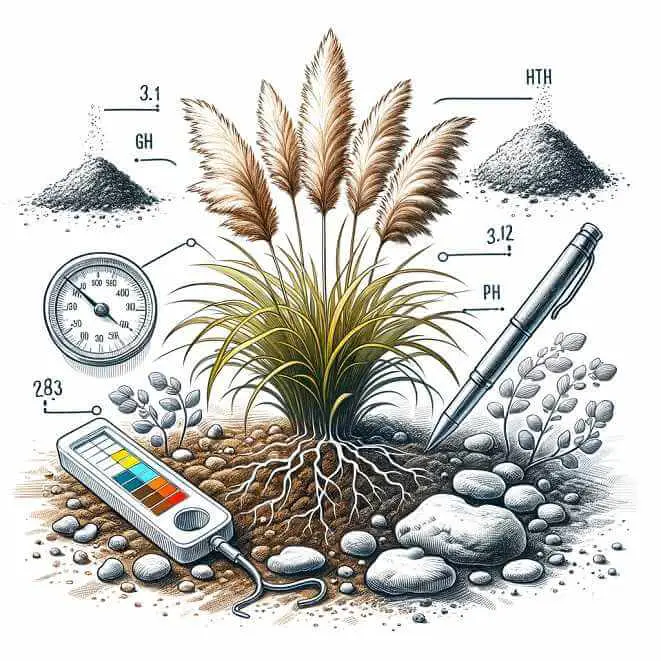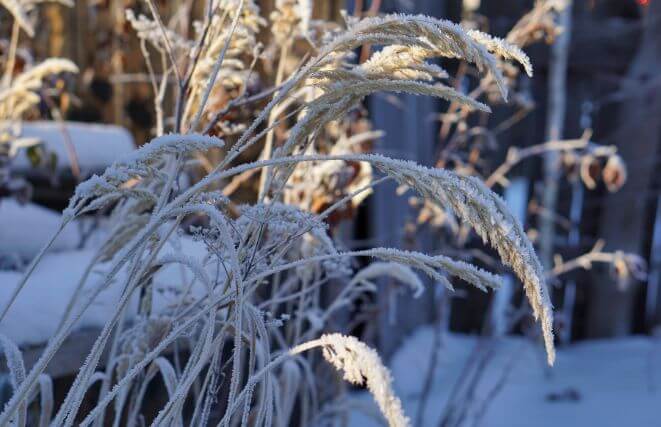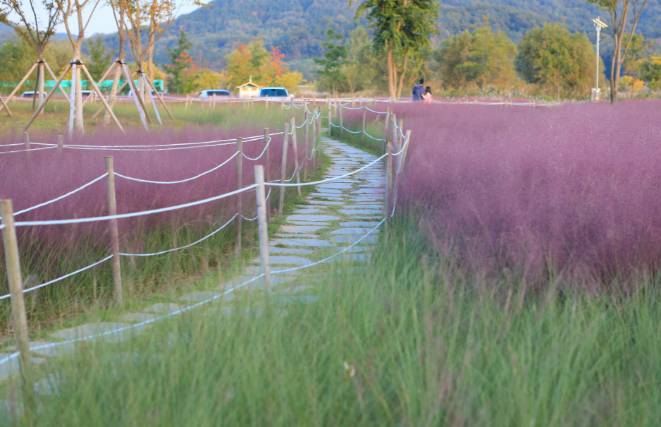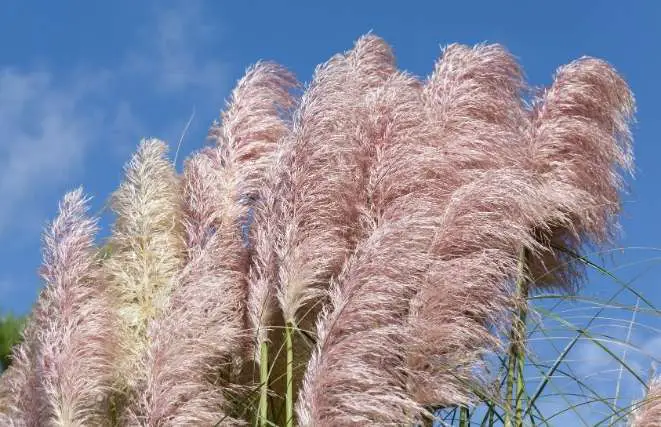The best time to plant pampas grass is in the springtime any time between March and May. However, the most appropriate time is dependent on your geographical area. This is especially the case if you want your pampas grass to grow to a height of 10-feet later in the summer.
Pampas grass doesn’t just offer a striking appearance. It’s also one of the easiest ornamental grasses to grow. However, an element that plays a massive role in how your grass grows is when you decide to plant these grass seeds. Pampas grass is known to thrive in warm temperatures. With that being said, this grass can also be grown in colder zones, but it isn’t going to grow all-year-round and the height potential isn’t going to be the same.
About the Pampas Plant
Pampas plant, also known as the Cortaderia selloana species, grows to become a flowing and tall feature in the ground that it’s placed when it reaches its full bloom. This pampas grass being grown at the optimal time is going to help it grow to its full potential. When it’s at full potential, it holds the ability to offer effective privacy for your garden.
How long does Pampas grass take to grow
Pampas grass is a type of long-leafed perennial that can grow up to 10 feet tall, and takes about 3-5 years to reach full maturity. The pampas grass plant prefers full sun and is hardy enough to withstand droughts and other weather conditions. It can take about one year for it to mature enough for people to harvest seeds from it, but this time will vary depending on the climate and soil quality.

Check the latest price on Amazon
When does Pampas grass bloom
Pampas grass blooms in the fall and winter months.
Tall and with long, wispy leaves, pampas grass is a beautiful plant that offers a hint of warmth when the temperatures start to drop. Often found in California and other warm regions, pampas grass is also perfect for colder climates where it can be grown in containers on decks or patios.
Pampas grass is generally planted with full sun exposure and is most at home in hot, dry climates. It has shallow root systems that can make it susceptible to drought if not given adequate water. Pampas grass also grows very quickly and can grow up to 6 feet tall in a single year!
Pampas grass growth stages
Pampas grass is a very attractive ornamental plant. It is also a coarse, erect perennial that can grow up to 10 feet in height. Pampas grass is a robust plant that requires full sun to thrive and grow well. There are 5 stages of growth which can be observed early on in the life of the plant.
The first stage is the seedling stage, which lasts between two and four weeks. The second stage is the tufting stage, which lasts between one and three months. The third stage is the lateral branching stage, which lasts between six and nine months. The fourth state is the maturity or flowering period, which lasts for about one year or until it starts to produce seeds for reproduction purposes. And finally maturation stage that lasts up to 10-15 years before this grass dies off.

How fast does pampas grass grow in a year?
Pampas grass is renowned for its fast-paced growth, typically reaching a height of 2 to 3 feet within a single year, given optimal conditions. However, the actual growth rate can be influenced by factors such as climate, soil fertility, and sunlight availability. During its active growing season, which generally occurs in the warmer months, pampas grass demonstrates vigorous growth, producing tall stalks and lush foliage.
Nevertheless, it’s important to acknowledge that the growth rate may decelerate during colder months or when the plant is subjected to unfavorable conditions. Regular pruning and maintenance are essential for controlling the size and preventing excessive growth of pampas grass in your garden or landscape.
How long does It take for pampas grass to flower?
The maturation process of pampas grass typically spans approximately two to three years before it starts producing its distinctive plume-like flowers. The flowering phase of pampas grass typically takes place in the late summer to early fall, although the precise timing can vary depending on factors such as the specific cultivar, growing conditions, and climate.
Once the plant reaches maturity, it sends up tall stalks adorned with feathery plumes that can exhibit hues ranging from creamy white to pink or purple. The flowering period can endure for several weeks, adding a splendid and striking showcase to the garden landscape. Consistent care and appropriate maintenance, including providing sufficient sunlight and water, can facilitate healthy growth and encourage the timely and abundant blooming of pampas grass.
Does pampas grass spread?
Yes, pampas grass has a tendency to spread if not properly managed. Its spread primarily occurs through underground rhizomes, which are thick horizontal stems responsible for generating new shoots. When left uncontrolled, these rhizomes can result in the formation of dense clumps and expand the plant’s coverage over time.
Therefore, it is crucial to adopt preventative measures to manage the spread of pampas grass effectively. This can involve installing barriers, such as underground edging or physical obstacles, to restrict the expansion of rhizomes. It is also advisable to regularly monitor the area and promptly remove any new shoots or seedlings that emerge outside the desired boundaries. By implementing these practices, gardeners can maintain better control over the spread of pampas grass, preventing it from becoming invasive in their landscapes.
Does pampas grass die?
Similar to any plant, pampas grass has a finite lifespan and can eventually perish. However, when provided with favorable growing conditions and adequate care, pampas grass proves to be a robust and enduring perennial. It can thrive for numerous years, gracing gardens and landscapes with its beauty. Nonetheless, factors like extreme weather, diseases, pests, or neglect can contribute to its decline and eventual demise.
Additionally, certain cultivars may exhibit less tolerance to specific conditions or have a shorter lifespan compared to others. Regular maintenance practices, including proper watering, pruning, and vigilant monitoring for signs of stress or disease, play a vital role in extending the lifespan of pampas grass and ensuring its ongoing vitality and well-being.
Further Considerations:
Along with the time of year that you should be planting this grass, there’s also a variety of other considerations that you’re required to make when planting pampas grass. These include:
Preparing the Plantation Area
When Lanting this ornamental grass, you’re first going to want to choose ground that’s not going to hinder its size potential or block other greenery. You should clean this ground, as well as work the soil to a minimum of 12 inches in depth. This should be done a few weeks before the planned time you wish to grow your grass.
Dividing the Existing Plants
Pampas grass grows as a clump-growing pampas grass plant in early spring that’s easy to divide and gain early new growth seedlings. Dividing these plantations in the early springtime offers the best results with root establishment and transplanting. After dividing these roots during the growing season, you should keep it in the soil in a different location at the same 12 inches depth. A recommendation would be to wear gloves when handling this grass as the blades of this grass are sharp and is able to cut your hands.
Beginning from Seed
When planting the pampas plant from seeds, you should start this process during the late winter months. This provides the roots with enough time to germinate and grow into robust seedlings before ultimately transporting these seedlings into an outdoor garden when there’s net growth.
Pampas Grass Frequently Asked Questions
Pampas grass is a hardy plant that can survive in the winter. It can be planted at any time of the year, but it’s not recommended to plant it during fall because of the cold weather.
Pampas grass can be planted in the fall if you live in a warmer climate, or if you have a greenhouse and are able to keep it warm enough for the plants.
Pampas Grass is a popular ornamental grass that can grow in many different climates. It is native to South America, but it can also be found in North America and Europe. It grows best in well-drained soil that has plenty of sunlight.
You should make sure that the soil is well-drained and has a pH of 5.5 to 6.5. You should also protect it from windy weather by planting it in a protected area or by using stakes or fences to secure it.
Conclusion
The optimal period for planting pampas grass is during the spring or early summer, once the soil has warmed up and the threat of frost has subsided. This timing allows the plant to establish its roots and acclimate to the new surroundings before colder temperatures arrive. By planting in this season, pampas grass has ample opportunity to thrive and prosper throughout the warmer months, enabling the development of a strong root system and ensuring better survival during winter.








